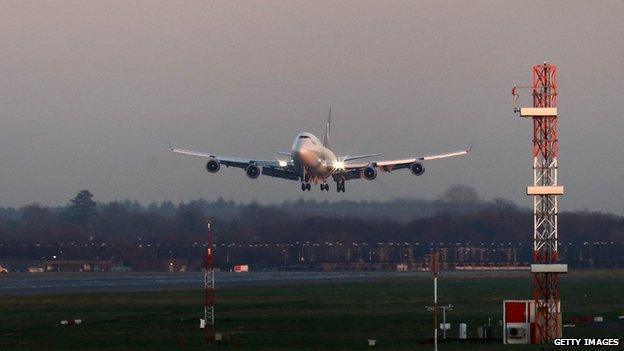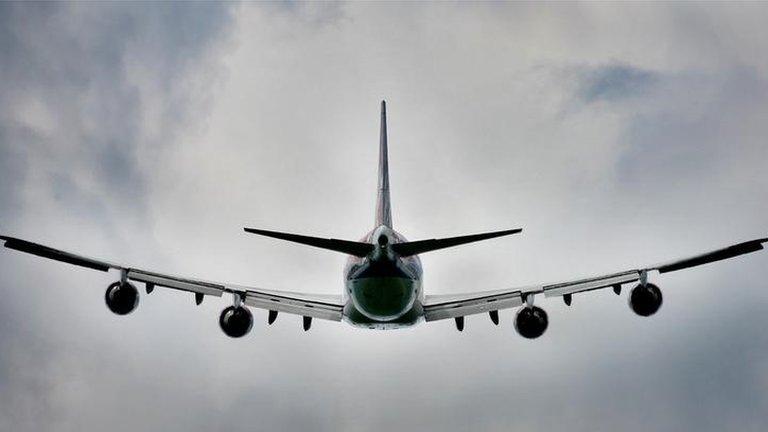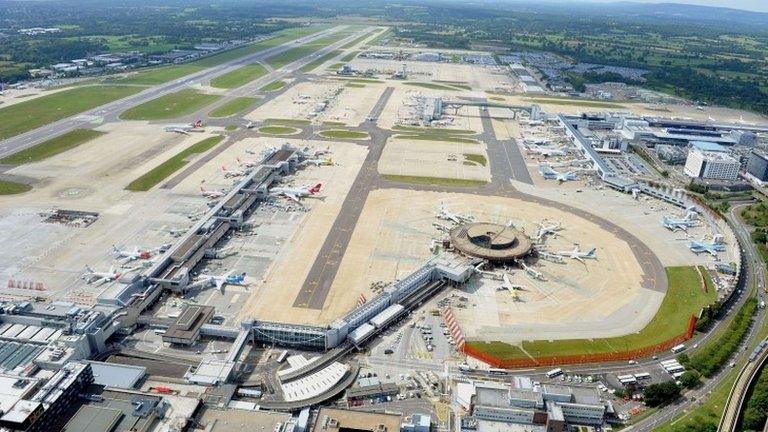Passenger number rise boosts Gatwick's runway campaign
- Published

Gatwick Airport's passenger numbers rose 7.8%
Gatwick Airport says it has had the busiest year in the airport's history, with passenger numbers increasing 7.8% to 38.7 million.
However, profits before tax fell slightly, from £85.8m to £83.5m.
Gatwick Airport chief executive Stewart Wingate said the results proved Gatwick was the best site for the UK's next runway.
The Airports Commission is expected to recommend new runway capacity at either Heathrow or Gatwick later this summer.
The airport recorded 906 air traffic movements on one day in August, a world record for a single-runway airport.
It has also boosted income from airport shopping by more than 10% to £149m by upgrading its North and South terminals.
Mr Wingate said: "Our record growth has shown why Gatwick remains the best choice."
The Commission, led by former Financial Services Authority chief Sir Howard Davies, is looking at three choices: a new runway at Heathrow, a runway extension at Heathrow or a new runway at Gatwick.
The government is expected to make its decision in the next few days.
Heathrow competition
Heathrow is the country's biggest airport and a hub where more than a third of passengers are connecting to other flights.
It is operating close to capacity, has established connections to emerging markets and handles a quarter of all Britain's exports.
The cost of a new runway there is estimated at about £19bn.
Environmentalists are opposed to all three proposals on grounds of air and noise pollution.
A new runway at Gatwick would cost an estimated £9bn. It is not operating as close to capacity as Heathrow and so far has focused on short-haul, leisure flights.
Gatwick, though, is introducing new long-haul flights to Turkey, Russia and Indonesia and the Middle East.
Mr Wingate said: "We have seen a great response from our passengers to new Norwegian long-haul services to the USA, which has resulted in impressive growth for these new routes.
"Gatwick is fast approaching capacity, with almost 40 million passengers travelling with us this year, which puts us a decade ahead of Department of Transport predictions."
- Published10 June 2015

- Published11 June 2015

- Published15 April 2015
